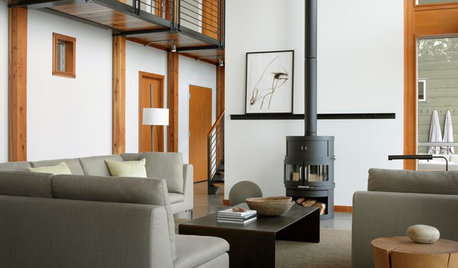Replace Gas Furnace with Heat Pump?
krzysiekf
11 years ago
Related Stories

REMODELING GUIDESClean-Burning Woodstoves Ignite a Greener Heating Trend
No need to rely on oil or gas to heat your home — new woodstove designs burn cleanly and are beautiful to boot
Full Story
FLOORSFloors Warm Up to Radiant Heat
Toasty toes and money saved are just two benefits of radiant heat under your concrete, wood or tile floors
Full Story
GREAT HOME PROJECTSHow to Add a Radiant Heat System
Enjoy comfy, consistent temperatures and maybe even energy savings with hydronic heating and cooling
Full Story
FLOORSWhat to Ask When Considering Heated Floors
These questions can help you decide if radiant floor heating is right for you — and what your options are
Full Story
FLOORSIs Radiant Heating or Cooling Right for You?
Questions to ask before you go for one of these temperature systems in your floors or walls (yes, walls)
Full Story
GREEN BUILDINGInsulation Basics: Heat, R-Value and the Building Envelope
Learn how heat moves through a home and the materials that can stop it, to make sure your insulation is as effective as you think
Full Story
HOUSEKEEPING5 Steps to Improve Your Heating System Now
Increase your heater's efficiency and safety for lower energy bills and greater peace of mind this winter
Full Story
GREEN BUILDINGHouzz Tour: Passive House in Vermont Slashes Heating Bills
Its ecofriendly, low-maintenance design leaves a family with more time to relax and enjoy the weekend home
Full Story
BATHROOM DESIGNWarm Up Your Bathroom With Heated Floors
If your bathroom floor is leaving you cold, try warming up to an electric heating system
Full Story
MY HOUZZMy Houzz: Renovation Brings Energy Efficiency to a Netherlands Home
A family of 5 tackles a potentially large gas and electric bill in a 19th-century house
Full Story






mike_home
krzysiekfOriginal Author
Related Professionals
La Mirada Solar Energy Systems · Ramsey Solar Energy Systems · Rehoboth Solar Energy Systems · Rialto Solar Energy Systems · Allen Home Automation & Home Media · Birmingham Home Automation & Home Media · Irvine Home Automation & Home Media · Oak Lawn Home Automation & Home Media · Orlando Home Automation & Home Media · Plantation Home Automation & Home Media · Stamford Home Automation & Home Media · Surprise Home Automation & Home Media · West Hollywood Home Automation & Home Media · Yeadon Home Automation & Home Media · Decatur Fireplacesmike_home
energy_rater_la
krzysiekfOriginal Author
ionized_gw
ionized_gw
krzysiekfOriginal Author
krzysiekfOriginal Author
energy_rater_la
krzysiekfOriginal Author
energy_rater_la
ionized_gw
ionized_gw
krzysiekfOriginal Author
ionized_gw
ionized_gw
krzysiekfOriginal Author
ionized_gw